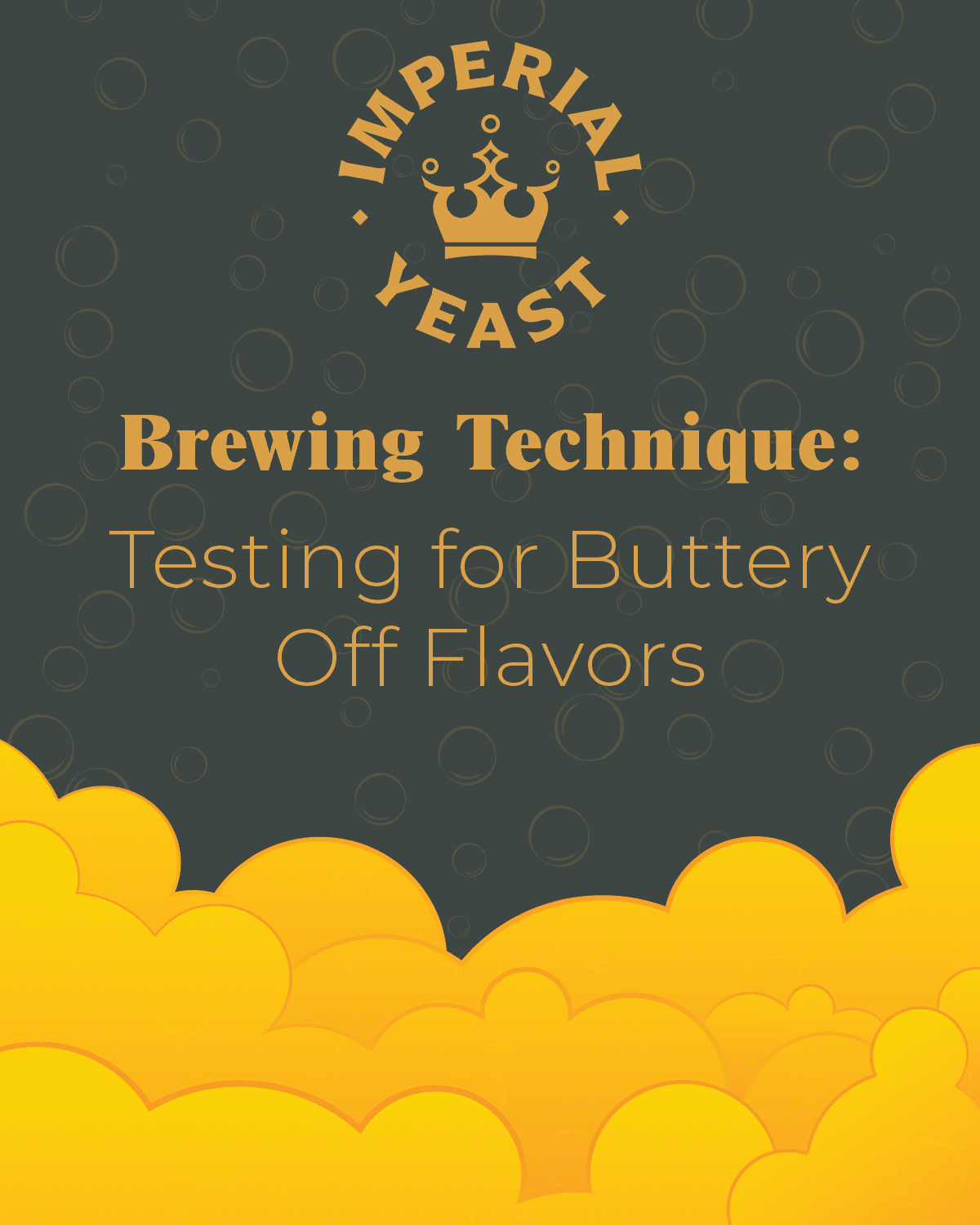Vicinal diketones are aromatic compounds produced by normal yeast metabolism that are perceived as butter, buttered popcorn, or butterscotch.
Yeast health, fermentation pH, free amino nitrogen (FAN) content, and temperature are all factors that directly affect VDK production and efficient reduction.
This test will help you determine if adequate diacetyl reduction has occurred. Learn more about diacetyl and how it affects your fermentation.
Keeping Your Yeast Happy
- Start with fresh, properly stored liquid yeast with consistent cell counts.
- Pitch at Rates that take into account the OG of your wort.
- Oxygenate appropriately.
VDK Qualitative Test Process
- Pull two separate 50-100mL samples of beer from the fermenter and cover (canning jars work well)
- Incubate sample #1 to 150ºF, covered. Hold at that temperature for 15 minutes.
- Hold sample #2 at room temperature, covered.
- Cool heated sample back to room temperature, covered.
- Perform sensory analysis on both samples, starting with sample #1.
Interpreting the Results
- If both samples are clean and no aromas of butter or butterscotch are detected, the diacetyl rest can be considered complete.
- If the heated sample (sample #1) is presenting with butter and/or butterscotch aromas and sample #2 is not, continue with diacetyl rest and retest later.
